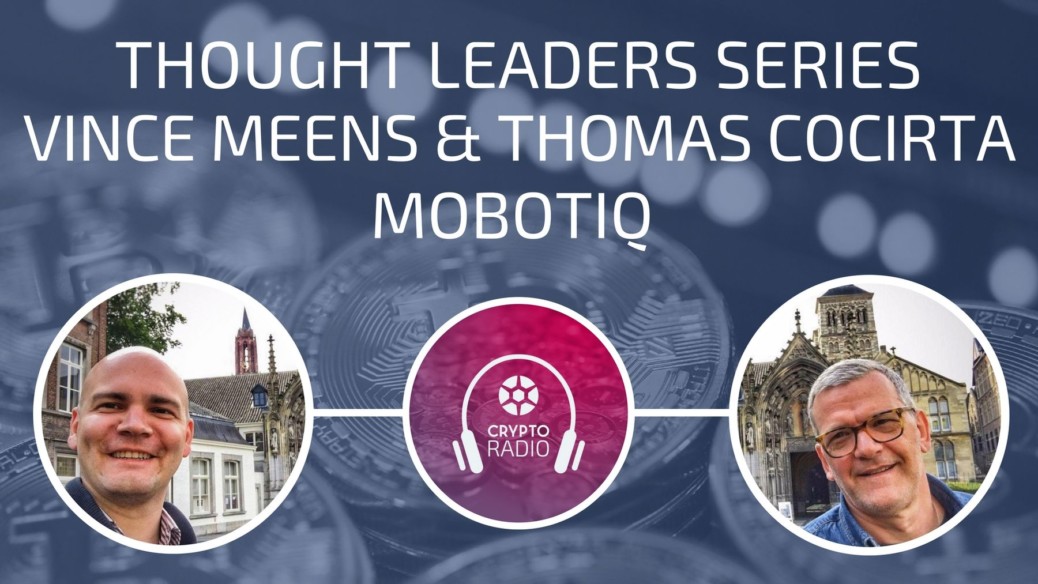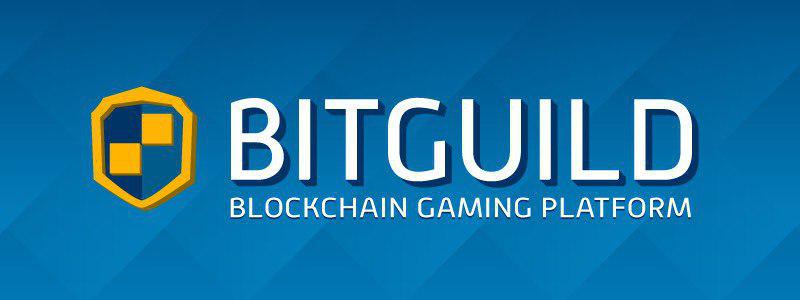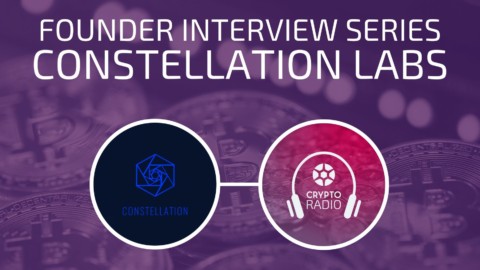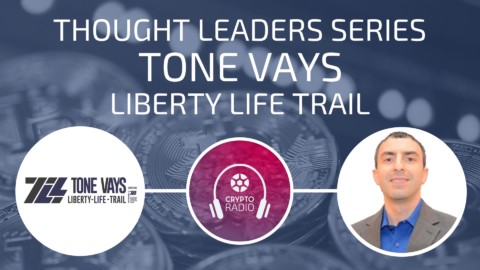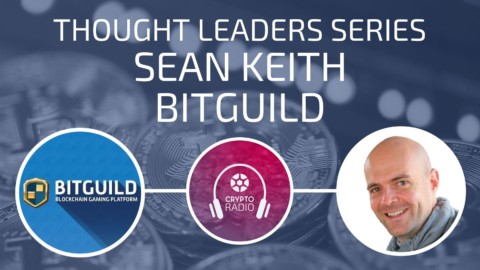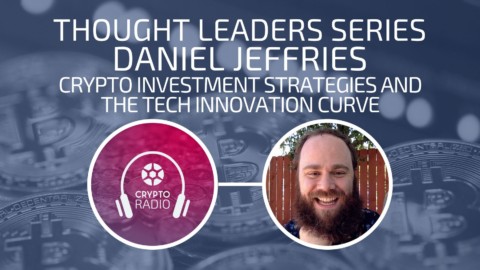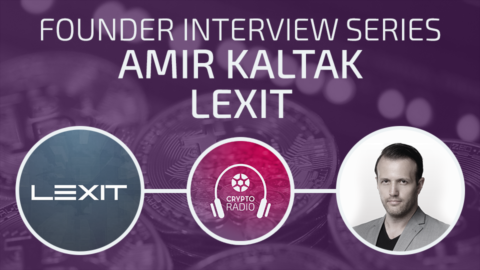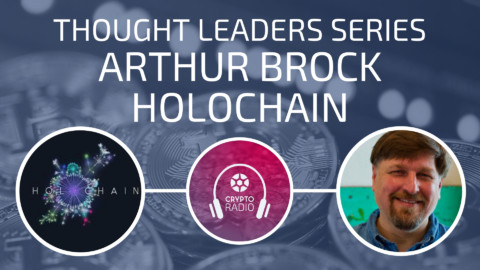Podcast: Play in new window | Download
Euvie: Hi crypto world. This is Euvie Ivanova. Today in the thought leader series Chris Sparks and I are interviewing Vince Cocirta and Vince Meens, the founders of Mobotiq. Mobotiq is a peer to peer decentralized mobility operator [00:01:00] that designs and builds its own autonomous vehicles. These vehicles are based on open source hardware so they can be copied to any part of the world and produced locally. Members of the Mobotiq platform are not just the users of vehicles but also the investors, designers, and manufacturers who are constantly working to improve the vehicles and the user experience. Mobotiq plans to test their vehicles in Paris after the trial phase is over.
In this episode we talk to Vince and Vince about the future of transportation [00:01:30] and how we can move away from a car-based society to cheaper and more abundant mobility options and business models. To get the show notes from this episode go to cryptoradio.io/mobotiq. Enjoy the show. This episode is brought to you by bitguild.io. Bitguild is a new gaming platform built using blockchain technology. Their mission is to redefine the relationship between gamers and game developers. On the Bitguild platform [00:02:00] gamers maintain full ownership and control of their virtual items, which are stored on the blockchain.
They can transfer items and progress between compatible games and they can make in-game transactions safely and cheaply, and sometimes free. Developers who join the platform will get a direct link to an established player base, the strong community, and a network of like-minded developers building on the same platform. Developers will also have the potential for direct game development funding from Bitguild. Bitguild just completed their token sale on April 5th 2018, [00:02:30] in which they raised $35,000 Eth, or just over 13 million USD at the current market rate. If you want to find out more, go to cryptoradio.io/bitguild.
Chis: Vince and Vince, what does Mobotiq actually do specifically?
Vince: Mobotiq is building a mobility operator, which is developing its own vehicles. For the moment though, they’re very small individual vehicles. Electric, of course, [00:03:00] and autonomous. We are already designing the vehicle and we are very close to the final goal of making it 3D printed. We are dealing with a partner in London, because he developed exactly the system we need. It’s a six-access robot 3D printer.
Chris: If I was user of Mobotiq three years from now, what would my experience look like?
Vince: It will be like you have an app on your smart phone. You call an autonomous pod vehicle, [00:03:30] which is a three-wheel vehicle. It’s coming at your door or whatever point A you decide it will be, and it brings you to point B. You have to pay it with your smart phone and so on. In fact, all you need to go from A to be B must be a smart phone.
Euvie: It’s a little bit like Uber.
Vince: It’s a little bit like Uber, but first, you have a specifically designed vehicle and second, it’s completely decentralized and it’s peer to peer. You can be part of the project. [00:04:00] I don’t even want to call it a company. It’s not yet a DAO, but we hope it will become.
Euvie: How do you see that working, a decentralized company that has cars? Who owns the vehicles?
Vince: The members of the community, the peers. We are calling them peers. From peer to peer.
Chris: What sort of implication does this have for the future of urban mobility?
Vince: That it’s much cleaner. Second, it’s more efficient, in terms of costs and [00:04:30] price for the usage. It’s nothing to do with the rest of the transportation. I would say you would have individual personal transportation less than public transportation prices.
Chris: Instead of having a taxi company that centralizes all the profits from urban mobility as the current system has it, it would be a fully decentralized autonomous organization owned by all of the peers in that network?
Vince: Exactly.
Thomas: Another important aspect is the manufacturing side. It also creates local employment opportunities [00:05:00] or local work opportunities to build these vehicles, because it’s fully open source and open hardware. People can start building them, people can charge them and they can earn these mobility tokens. It creates a lot of local employment and opportunities for the people.
Chris: Vince, how long have you been on this project now?
Vince: I think around a year.
Chris: Okay, what excites you so much about this project?
Vince: I think the biggest for me is coming up with a totally new business model. I think the vehicle is one aspect, but the fact that the business model is in a place that drives prices [00:05:30] down to as cheaply as possible and toward propagating the system to other communities. Basically, every time you take a ride in these vehicles, a small fee of it will contribute to getting more vehicles on the road. I think this aspect of having this propagating viral effect of scaling up this whole project, I think that’s, for me, fascinating. Mobotiq could be one of the first where you have a fully tangible something that you daily use instead of just a [inaudible [0:05:55] company, but a blockchain [00:06:00] company that I can basically sit in, a peer to peer decentralized company that replicates itself based on the more that people use it instead of a shareholder deciding on something.
It’s really, us as the people by using it we keep boosting it and growing it and so on. Because it has this fully open source open hardware mindset, it fascinates me that if it can be shown in one case to be successful it can be copied instantly to all kinds of other places all over the world to start doing this in parallel. If we all do this and we all shift our mobility towards decentralized, fully electric, autonomous model, then we can create [00:06:30] local employment, we use local energy, we use local financing, and we can start shifting away from this car-based society towards an autonomous pod-based society where we share these vehicles.
Once this is in place, I think mobility will become way cheaper, it will become way more abundant, then you can start thinking about things like mobility poverty in society. A lot of things in society, they are discriminatory, for example, based on how mobile you are. For example, having certain job opportunities or feeling included into certain society often has to do with [00:07:00] whether you can get there easily or not, whether you’re dependent on other people or on schedules to get there. If we can even out for society the opportunities around mobility and make mobility abundant and make it equal for everyone, or at least have the equal opportunity, then I think society will shift drastically.
Chris: One of the things that I’ve noticed living in the Netherlands is the lack of a necessity for a car. When I explain that to my peers back home that are still in the US, it’s unimaginable to them to just have that entire part of their budget removed. [00:07:30] I don’t have to pay insurance for a car, I don’t need to pay a lease. They still have the issue of having to pay for all of those things and maintenance and everything.
I can only imagine what it would be like for someone who’s in a completely different demographic from my friends back home, not having a car, having to use public transportation which is awful compared to what we have here. That definitely has a lot of major social implications for the future. It sounds like what you’re doing is taking the concept of viral marketing but applying to an actual physical object.
Thomas: Yeah, kind of. What’s okay for me with the world viral [00:08:00] is that it’s biology. We are trying to copy the nature and exactly what Vince said, we are trying to embed a proliferation system into the mechanism, which is ensuring the proliferation of this new species of vehicles and of manufacturing units.
Euvie: That’s really, really fascinating. How are the actual decisions made when to make new cars? How does the algorithm work in simple terms?
Thomas: It’s a balance between [00:08:30] supply and demand.
Vince: Basically, every vehicle has its own mini bank account and will basically make its own money and it will use that money to compete with other vehicles, for example, for rides, to do it as cheaply as possible. Then it will save up this money to pay for electricity, to pay for getting washed, to pay to get upgrades. All these vehicles they will start developing independently, like a species, like Thomas said. That would mean that one vehicle might have more upgrades than the other and thereby starts getting more rides than the other vehicle. In the end, all these vehicles [00:09:00] will make more money than they need to keep operating, then this money doesn’t go back to central shareholders but it will go, again, back to the community to pay for the next vehicle to be built.
It will give an assignment and it will actually pay for it. The mechanism then is, of course, that the popular vehicles are the vehicles that are in higher demand, they will propagate quicker than the vehicles that are in very low demand. You will get this natural effect of enlarging something that is successful. What we start with with this trial model of the vehicle, it’s basically a two-layered vehicle. [00:09:30] You have the platform with wheels and the engine and so on, the electrical engine, and you have the cabin. What’s probably going to happen is that the cabin aspect of this vehicle, it will be adapted by people for all kinds of different purposes.
You will have cabins, for example, for delivery. You will have cabins for children, cabins for two people, all these things could pop up in the near future and you will start having this nature selection of which things are needed. Maybe we will have moving vehicles. If you have a city where there’s 1,000 vehicles, you will have 800 one-person vehicles, 40 pickup vehicles, 20 [00:10:00] children vehicles and so on. It will develop naturally.
Chris: There’s one platform and you can have multiple numbers of passengers on that platform, or have you designed different capacities?
Vince: Right now, we’re just focused on the one-person vehicle. But just like the metaphor of a species, there’s nothing stopping people from coming up with different kinds of cabins. Maybe you will have a pizza delivery cabin, or you will have a garbage collection cabin, or you will have a cabin that is very suited to pick up elderly people or handicapped people to easily get in and out of. [00:10:30] There’s no central organ deciding, “Hey, it’s going to be 1,000 similar vehicles.”
It could be that all these vehicles start developing uniquely. All these blueprints for these vehicles will then be shared again, open source, so that if in a different city people would need a similar vehicle they can just download the blueprint, give it maybe a design flavour that they would like in their city. They can all benefit peer to peer from the development in each region.
Euvie: Who will decide originally how many cars and of what kind will be in each city? Will that be decided by [00:11:00] a board, by a vote?
Vince: Initially, the thing to start in a city is that we have a certain threshold for the first user experience. For example, in a big city like Paris we have this estimate that we want these vehicles to show up within a certain amount of minutes, so we need a certain base threshold of the amount of vehicles that are driving through the city so that when you push that button it’s there within a couple of minutes and you can go from A to B. If we were to start with a very small amount, this first initial user experience wouldn’t create as good an effect.
For example, with Paris what we aim [00:11:30] at is initial deployment of 4,000 vehicles because that’s what we believe will have this basic coverage level for a proper first experience.
Euvie: Have you guys been running trials either live or in simulation?
Vince: Yeah, we now have several testing vehicles. For example, you have two things, one is development of the vehicle and the other one is literal deployment with real users. The second part, that’s something that’s still on the calendar later this year. Probably where we will start doing some test drives with real passengers. Right now, we are fully focused on developing [00:12:00] the initial vehicle. This is like this tilting vehicle which is like the scooters with two front wheels, but then with a fully closed cabin. This vehicle is fully driven by wire.
This means that there’s no steering wheel in it or anything like that, it’s controlled by software and it can be controlled either by the self-driving kit or it can be programmed to drive on a certain route. What we’re going to do probably at the end of the year is start doing on test routes, just have people short rides in it and start doing some real routes with real passengers. The aim in the end is to, within a year, [00:12:30] get to a point where we take out all the baby difficulties that we have in the beginning and get it to a mature point where it becomes a stable product that is maturely developed. Then start looking at the deployment for Paris so that, probably around 2020, we will start deploying the first vehicles and aim within that year we will produce 4,000 vehicles to get on the road in Paris.
Euvie: Have you been running simulations to see how this looks like at scale?
Vince: Right now, we didn’t do any tests. For example, if your question is related to the [00:13:00] self-driving aspect, I think one important thing about our project is that we are not the inventors or the developers of the self-driving technology or for most of the technology in this vehicle. Almost everything that we put on this vehicle is developed by other companies that have huge RND budgets to develop this technology to a mature level.
For example, our approach to the self-driving aspect is to fully leverage a self-driving kit that other companies have developed, tested, and so on, and we just apply it to our vehicle. Our only concern is to make a vehicle [00:13:30] that is very easy to assemble, that can be locally manufactured and doesn’t depend too much upon proprietary parts by all kinds of suppliers. The whole testing aspect, once the vehicle is fully integrated, it will be a combination of the tests of the individual suppliers of, for example, the self-driving kid plus the road worthy tests by certain governments to drive with these vehicles in certain countries.
Probably what’s going to happen is that we start in the beginning with a very limited set of what you can do with the vehicle. For example, on a fixed route or in a certain area on a [00:14:00] limited speed. Then later on, we start gradually releasing it to become a big substitute for a full car experience. In the beginning, it might be more like a shuttle, it might be more like closed area environments so that we limit potential risks of this deployment until it becomes really mature.
Thomas: I would add a certain detail, which is the manufacturing is designed to be very flexible. That means, by definition, 3D printing. All our philosophy, it’s not to decide now what is going to happen in [00:14:30] three years, but to be very flexible. If we start with 4,000 vehicles in Paris, this is the proof of concept. If we need, let’s say, six months after [inaudible [0:14:41] we are able to manufacture it.
Another point is that in 3D printing diversity comes for free and we can recycle. Let’s say we were wrong about the building of the vehicle. We can melt down all the vehicles and rebuild them in, let’s say, [00:15:00] three days for each vehicle. We can reconfigure at each moment.
Vince: I think it’s important because in the end like a traditional manufacturer of a vehicle, they need to come up with this vehicle that can deal with all these circumstances for the upcoming, I don’t know, 10, 15 years. I think for us it’s more about this gradual constant improvement by the crowd. What we would like to get to is this point where these vehicles are, on the one hand, assembled by, in most cases, by the social working places and by locals as much as possible, and that [00:15:30] most of the parts of the vehicle can be recycled or reused in the newer version. The other thing is that we want to include schools and other environments to constantly learn about these vehicles and come up with improvements.
Then because we don’t need to sell a vehicle like a traditional car manufacturer, there’s no incentive for us to come up with a new model and with a huge upgrade every year where we do this. We can do upgrades every week where we constantly update the fleet to get safer, better, more efficient, and get out the kinks. This is a collective effort where I think this is a way more natural way than just waiting for this new [00:16:00] product line, again, with all the new features and these things.
Euvie: With the cycle of consumption where companies are forced basically to release a new model every year, that also creates an incentive for them to build in planned obsolescence into the vehicles. With your system, the incentive is the opposite. You want to make the basis of the vehicle last, but then the other parts you want to make them replaceable easily.
Vince: Exactly. Thereby get to a point where now vehicles are very expensive, so it’s all about creating [00:16:30] the most luxurious vehicle that can cater you at least for you commute, for your holiday, when you need to fill it up with all the packages and travel bags and so on. It needs to facilitate you and you need to bring the kids to the soccer game and all these things combined.
That’s something that really is different with these vehicles because here you can do it for one purpose, keep it simple, keep it extremely easy to clean, to charge, to upgrade, to fix and these things, instead of being this extremely multi-purpose luxury vehicle. Therefor, we can focus on having these things last as long as possible and thereby [00:17:00] be easy to upgrade and not be in the business of selling products. We’re in the business of delivering mobility. This business of delivering mobility is all about durability, it’s about safety, and about all kinds of different dynamics.
Chris: If I design a pod based on the specs provided to me by the market and then I get beaten to market by two other teams who design a different pod with a slightly different feature, would all that effort just go to waste or would it be rewarded in some way?
Vince: I think in the end, just to be realistic here, it’s not a fully operational marketplace [00:17:30] yet, I think it’s about the general understanding in the same way as we develop open source software where people get credited for the contribution that they make. In the end, if it’s of value to the community, of course it will be rewarded by the community. It’s not like in a traditional way where you will be paid by the hour, because maybe some person is just spending hours and hours on something that doesn’t matter for the rest of the community.
I think there will always be a basis that the value that you bring gets recognized by other people and that will be basis of that coming up with a reward for the community [00:18:00] decides, “This is something we want. Maybe this is something we don’t want.” I think this is something in general for most start ups that they always should keep in mind. Are you developing something that matters for people or are you just developing your own fantasy of something that is not relevant to other people?
Chris: It’s forcing entrepreneurial capacities into the purely engineering minded person.
Thomas: Yes. We have incentives for people to do business on our platform.
Vince: Exactly.
Thomas: This is our token. [00:18:30] If you buy our token it will give you the right to make business with us. Franchise system, so you’re part of the community.
Euvie: Can you explain a bit how the token works, how it plugs into the ecosystem? What does the ecosystem look like?
Vince: The token, first of all, is a requirement to enter into this collaborative community. It’s like an entry ticket. This is, on the one hand, the tools to collaborate, so this is just [inaudible [0:18:54] for software. Then we have a similar thing where people can work together on computer, design drawings, where people can work [00:19:00] together on concepts and spare on this and vote. That’s one aspect. The other thing is that, of course, if you contribute a vehicle and you start building a vehicle and you contribute to the community, that you will get rewarded for doing so, if the vehicle gets adopted by the community.
If the vehicle starts making rides and starts generating revenue you will get compensated for the fact that you built it. In the end, the vehicle, once it’s in place, it’s owned by the community as a whole. We will not get to a point where we’re selling individual vehicles to individuals. It’s all about contributing [00:19:30] to the bigger whole and recognizing people that do so in a fair way.
Euvie: Let’s say I want to participate in the Mobotiq ecosystem, what are some of the ways that I can do that?
Vince: You can have the practical side of contributing to the vehicles on the road, this starts with designing, adding to the source code, adding to the vehicles via helping to manufacture them. On the other hand, for the operational fleet you can contribute, for example, to washing them, to contributing electricity to the vehicle from your solar panel on your roof, or maybe, I don’t know, [00:20:00] decorating them for a special. Whatever, these kinds of things.
On the other hand, you have the expansion that gets rewarded. For example, if a new city doesn’t have the Mobotiq platform yet and you want to hold the first meetup and get a lot of people there, you can earn these tokens. If you start priming the community, start building this up, this is something that this rewarded also. Once your community is ready and prime, then we have this thing of effect in a box. This is basically where the whole manufacturing of these vehicles can be done within a shipping container. We made this mini model of an assembly [00:20:30] spot in a shipping container.
If the community is ready, we just deploy a couple of these shipping containers at the site of a city and locals can start working in it that we train with the open source knowledge about how to build these vehicles and they can start building them. This creates this mini economy in the beginning of manufacturing them, keeping them operational, and expanding it. Then later on what we can get to is this point of what are the vehicles actually doing on their route. Are they, for example, facilitating a certain event or that you can go to a certain store or restaurant [00:21:00] and these things.
So, the next layer will be like what is the business model that we can start building on top of all these movements of people going from A to B. Maybe then we can get to a point where the whole business model of mobility will start shifting away from a passenger paying for his rides one on one to maybe a model just like how we have it on the internet where the end destination pays for your whole free journey to get to that destination.
Euvie: What are some of the ways to actually use tokens? Can you spend them or are they just an entry ticket?
Vince: You can earn them [00:21:30] by contributing to the community. You can purchase them if you’re an outsider and don’t want to work for a community. You can, of course, purchase them from people in the community. Of course, you can exchange them with other people, so you’re free to trade with them. Every time you take a ride or you get a certain thing from the community, like going from A to B or another value that is delivered over this thing, then, of course, you can spend them and this is the basics.
Chris: Is there diminishing value to a token that you receive for, for example, designing something that is made obsolete in a certain [00:22:00] amount of time?
Thomas: I think this is just speculating at this point because this thing, this whole dynamic of the crowd developing something and how long something will stay relevant or be copied is already staying. It doesn’t have so much to do with tokenomics or anything, but more about the crowd dynamics or the progression of an organization or the progression of what a community likes. I don’t think there’s a standard model for this. This is something by trial and error that we need to get to. I don’t believe in the patent system, I think it should be about empowering each other to constantly build upon something that [00:22:30] built that someone else can use as a stepping stone for the next innovation. The models that will rise from this community should empower that mindset instead of the protective mindset of saying, “This idea was mine and I’m going to claim it for a long time.”
Chris: Back to tangibility. Where do you plan to launch this? In Paris?
Vince: I think Paris specifically is a very good initial deployment. I think beforehand we would like to do a smaller deployment to get out all the kinks, so to say, and to get some basic deployment experience and get the whole flow working [00:23:00] before we scale it up. Probably the first deployment will be a factor of 100 or smaller, like maybe up to 40 vehicles in a small testing situation and we’re aiming to do that in the Brightlands region to get it to a certain maturity level. Then the real first user experience would be in Paris. In Paris we aim at 4,000 vehicles because it’s a city with a lot of commuters, it’s a city with a lot of traffic jams and it’s a city where a lot of people don’t fully care about which brand or specific vehicle they drive, they just want to get from A to B.
The other thing is, of course, that Paris has [00:23:30] a massive public transportation system that is very full during rush hours and it is empty at other hours of the day. A lot of ingredients that we’re looking for are in place in Paris.
Chris: They also have the issue of keeping things clean. God knows how much they spend a year just cleaning off the brilliance of that city. I can see that as a good argument for you actually going in there and making your case to the government.
Thomas: Actually, we are supported by the town hall of Paris. They like the idea so they are going to support us.
Vince: Another thing is also I like that these vehicles, [00:24:00] they create this opportunity also for people that have solar panels and other energy generating equipment that they can contribute not only to the traditional grit but they could get to the point where we have this voting fleet of vehicles that would like to have access to this energy. I think it could also be a great kickstart of this degrading or this incentive for people to have their own biogeneration and other kinds of equipment and have multiple options who to sell it to.
Euvie: Are there going to be ways to spend the token before the official [00:24:30] program is actually launched?
Vince: In the beginning you can, of course, reward other community members for the contribution that they do. This is more like a donation aspect. You can spend it, for example, to get access to certain tools or toe reward people that build certain tools. This is something that gradually needs to develop. In the beginning, yes, it’s mostly software in the platform. Later on, it will also be that hardware aspect and it will also be what you do in the vehicles. Maybe you will pay for the entertainment on the vehicle and all kinds of other ways of spending the tokens will appear.
[00:25:00] Other things might be boosting their community in the city. It could be on hosting meetups or getting certain events going or these things and just being a supporter and an investor in this2 initial kickstarting of the community, kickstarting of the development by the crowd.
Euvie: I just want to understand what would be the incentives for people to actually buy tokens early on before the hardware is available other than just the altruistic aspects?
Vince: I think the most important aspect in the beginning is like, okay, with a traditional purely software based [00:25:30] token sale is all about this fully global mindset. Whereas with us, it’s fully focused on getting something hyper locally. The hardware is relevant for Paris in the first deployment. Our full aim is mostly in the beginning for people of Paris to support us and the people that want to get it to their own city later on. In the beginning it’s about getting this mindset right that people that want to use these vehicles want to contribute to getting these vehicles on the road.
I think this is a different mindset than the mindset with most token sales where it’s this [00:26:00] hyper speculation thing of driving up a price based on some hive effect or whatever. Here it’s about getting as quickly as possible to having these vehicles on the road and that I can order them. Because of the amount of tokens is limited for their deployment, it creates a scarcity that if you’re first then, of course, the benefit that you will have is that you’ll be the selling party to the people that want to take rides in them alter on. This dynamic, yeah, in the end it should be about this closed loop, that it’s not just a role as an investor and other people have the role of the consumer, and the people that invest [00:26:30] in most cases should also be the people that really want to use this vehicle.
Thomas: There’s another advantage of possessing tokens, as I said. We are trying to build a franchise mechanism so people could do business. They are going to enter on our platform and they are going to do business. If you have tokens, let’s say, we are going to make several levels of amount. Basically, we’ll give you the right, for instance, to produce vehicles or the right to operate them. This is the incentive. [00:27:00] You can make business, I hope, that people will be able to quit their jobs and be entirely hooked in our network. If today, with one token, let’s say you are able to use a pod one hour.
If the value of the project increases, so would the value of one token it increases. You will be able to take a pod for four hours with the same token. With one more token you can do more in two years depending on the success of the project.
Euvie: Are you going to do this ICO [00:27:30] coming up soon or are you applying it for the next couple of years? What’s your timeline like?
Thomas: The only problem we have currently are regulations. We are preferring to wait just a little more.
Vince: Also, to give a bit of background, we’re fully privately financed so far. The whole development of the vehicles and maturing the aspect of the product that we have. This is something we took care of ourselves. I think the whole ICO, it should mostly go towards the deployment and creating this local [00:28:00] opportunity of assembling them and paying for that value. For us, it’s more about doing this in the context of the stable that we know fully all the ins and outs of our product and our system before we deep dive into this. I think this is something maybe that is more a safe route to market than most ICOs take. For us, it’s really about tangible deployments. That’s what want to aim at, not so much as crowd funding crazy developments prints and not having a clear goal for that.
Euvie: What is the next step for Mobotiq in the next few months, in the next year?
Vince: [00:28:30] The first thing is for us to develop the vehicle a tiny bit further. We do have the working prototypes but they should be simplified a step more as it becomes more easy to assemble them. The other thing is about dealing with the regulation of getting the vehicles on the road. We’re partnering up with a lot of parties that have experienced in several countries to do this properly. Probably there’s going to be a divide, like I said before, we limit the vehicle in the beginning to not be fully going through all the checks that the car initially needs to get through, so that we can start relatively [00:29:00] lightweight. Maybe in the same category as scooters or something like that.
The other aspect is finding the community so I think we took a good first step, for example, with Paris with getting support from the town hall. The next step for us is also to start building the community. People on the ground, people in the subway, people in the traffic jams that start longing for this new way of mobility. This is something that is priming with events, priming with meetups, getting ambassadors on the ground and start building up this traction of this first initial group that really says, “Hey, [00:29:30] we want this.
We’re gonna finance it. We’re going to built it and we’re going to energize it and we’re going to keep the thing operational. We’re going to do this together.” If we get this initial spark going there then I think in 2020 we can get to a point that real users can start driving around in these vehicles. Then it’s the effort of thousands of people that work together and bring this to a maturity that makes it happen, not so much as is a central organization.
Chris: Going back to the entrepreneur versus engineer dynamic, I think you guys actually [00:30:00] compliment each other and maybe have learned something from each other in the past year. Can you guys go into the relationship that you have orbiting around each other? Go into a bit of that detail, why are you guys the ones that are going to bring this to market?
Thomas: I really think that between me and Vince it was a real meeting because I was listening for a podcast, your podcast, so I had to listen to it for a second time. I loved it. Then I have a partner who listen to it simultaneously. We emailed [00:30:30] each other the podcast. Then the next day I contacted the Vince. We are definitely on exactly the same wavelength.
Euvie: Wow, that’s awesome.
Vince: Actually, I decided to drive to Paris and to meet up. We started discussing things and I think in regards to the complimentary aspect maybe that Chris is referring to, I think the challenge always with projects like this is that, on the one hand, you need to have an amazing product, and the other one is all about distribution and it’s about getting the adoption going. I think this might be [00:31:00] the dynamic between us, too, that the history that Thomas has with foreseeing what is needed for the products of the future and how this should work and working out a tangible prototypes that we have now.
And putting and putting it into reality. I think that that’s really a great quality of Thomas. I think it’s amazing. If you have super long conversations with almost how much background knowledge has gone into where we are right now. I think complimentary in my role is more about maybe the side of priming the community, getting the story out, maybe putting the whole context framing of what Thomas is building [00:31:30] into a storyline and getting people rallied behind it. This is something, like, if we work together on this I think it could be something that’s going to work out great.
The relationships between me and Thomas is not a formal one, it’s one of mutual respect. This is one of mutualism where both understand that by helping we will both get further, so we’re not in this boss or business partner mindset where it’s all about contracting these things. Now, it’s about this mutual understanding of what we both want to contribute once we put these things together we will [00:32:00] push things forward. This is why we are, even after more than a year of constantly discussing these things, constantly working together, because it’s a higher calling than just seeing it as a purely professional thing.
It’s really something that was both believe in, both from our perspectives and where we feel that this project is the one where we can showcase these values and these visions for the future. That’s why I’m very proud to work together with him.
Euvie: Well, it’s been great having you guys. Thanks so much for joining us and telling us about your vision of this project. I really look forward to what you build in the future.
Vince: [00:32:30] Thank you.
Thomas: Thank you.
Thomas Cocirta and Vince Meens, the founders of Mobotiq, discuss the future of urban transportation.
Mobotiq is a peer-to-peer decentralized mobility operator that designs and builds its own autonomous vehicles. These vehicles are based on open source hardware so they can be copied and locally produced in any part of the world. The members of Mobotiq platform are not only users of the vehicles, but also investors, designers and manufacturers, who are constantly improving the vehicles and the user experience. After the trial phase is over, Mobotiq plans to test the vehicles in Paris, which is a city with a variety of transportation demands. In this episode we talk to Thomas and Vince about what individual and public mobility will look like in the future, and how we can move away from a car-based society to alternative mobility options and business models.
What we cover in this episode:
- How a decentralized mobility operator works on a practical level
- How open source hardware and manufacturing affects the car market
- Community as the owner of vehicles and the mobility platform
- A new business model for transportation that uses local energy and local financing
- How Mobotiq and similar platforms help contribute to equal opportunities in mobility
- What does virality have to do with vehicle manufacturing?
- Decision making in a decentralized, community owned mobility platform
- How to incentivize users to contribute to the platform on both engineering and business side
- How tokenization works and how members can earn and spend tokens
- Complying with regulations
- The Mobotiq ICO and roadmap
Resources:
- Mobotiq website
- FTP033: Vince Meens – Blockchain: The Building Blocks for a New Society
- Crypto Radio’s Thought Leaders Series

